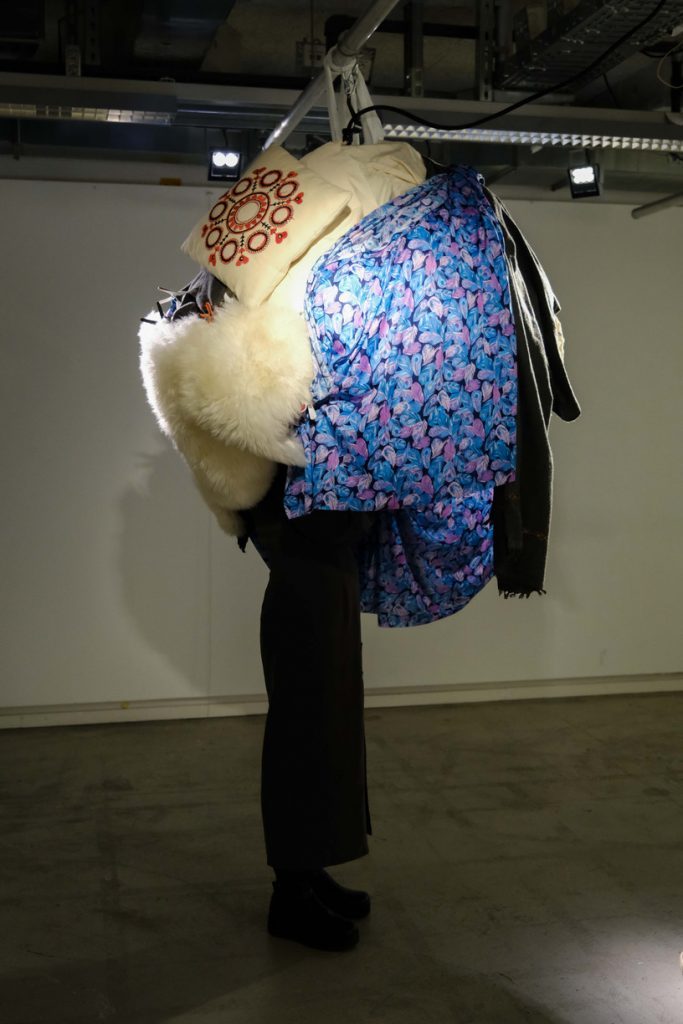Installation and audio
About phase 1 in Zurich
This year, in 2023, the first phase of the Transcultural Collaboration (TC) program lasted four weeks and took place at the Zurich University of the Arts. Being presented with different input lectures around the topic of protection the TC-participants dealt with current challenges to democracies all around the world, the colonial legacies that persist in Switzerland, exchanged with several artists connecting their practice to an understanding of community and collaboration and did some local “field trips” around the city of Zurich. The participants shared their own artistic practices through different mediums such as performances, talks and meditation exercises. The time spent together was intense. Participants still had to get to know each other, a shared language and understanding had yet to be found, common ground needed to be established, differences acknowledged, and one’s own place in the group needed to be found. After two weeks of inputs, getting to know each other and discussing the possible guidelines for collaboration the participants got to work on smaller group projects during two weeks. The works all connected over the topic of protection and found different ways to approach the questions of what protection actually means, which conditions create safety and when protection can tilt into over-protection and oppression. The result of these collaborative works can be seen in the following.
The work “In Remembrance” investigated the memory of being protected as a child in the sweet comfort of a pillow fort. A comfort that originates from the feeling of being protected inside, separated from an “uncanny” outside. A condition that made us feel safe as kids but seems less comforting and starts to crumble, when we turn our attention to different ways that border keeping logics unfold in today’s society. Together Lucy HO TSZ LONG, Matthias NAEGELI, Larissa PLATZ, Aparupa SAHA and Vincent VAN DER DONK created a work that comprises a deconstructed installation of a pillow fort, with accompanying background sounds and vocals inside.
The outside had a patchwork of quilts, sheets, printed blankets, a pillow draped around it – everything that goes into constructing a pillow fort. While the visitor could stand underneath a hanging structure like a protective shelter to climb underneath, their lower half stayed exposed. Once inside, they would hear a poem about childhood memories, about being inside and outside, dripping on them from a hanging sound shower. The construction emphasized the dichotomy and duality of a protective regime that also encompasses, quite unavoidably and not always in a desirable manner, separation and boundaries.
The collective process itself left the group feeling vulnerable at times. They attempted to protect themselves by hiding in their physical pillow fort but found that the pillow fort was not enough to make them feel secure and seen anymore.






